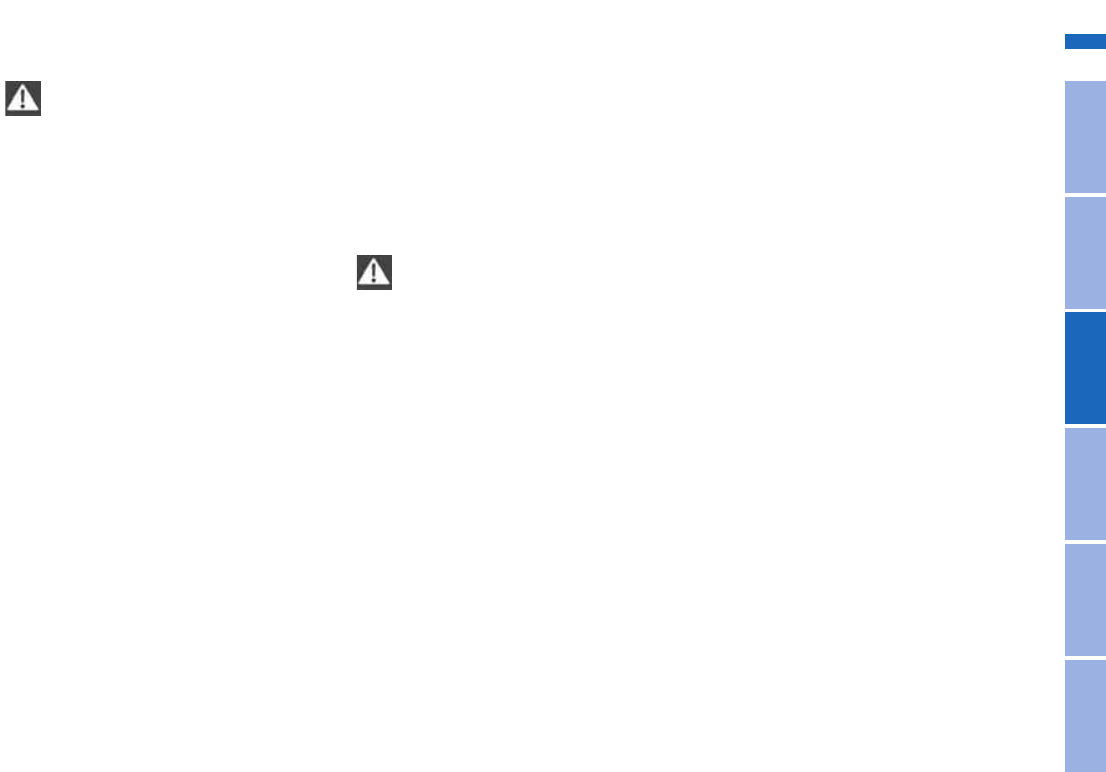
121
Do not continue driving with a flat
tyre. If air pressure is lost from a
tyre, this seriously affects the car's han-
dling and braking, and could cause the
driver to lose control. Avoid overloading
the car, as this could cause the tyres'
load capacity limit to be exceeded.
Otherwise you could overheat the tyres
and cause internal damage to them in
the short or medium term.
This could lead to sudden pressure
loss.
Unusual vibration while the car is being
driven could indicate a tyre fault or
some other defect on your car. This can
be caused by driving over kerbstones,
for example. The same applies to any
other unusual road behaviour, such as
pulling severely to the right or left. In
such cases, reduce speed immediately.
Proceed carefully to the nearest BMW
Service or tyre dealer, or have the car
towed there so that it can be checked
or its wheels and tyres inspected.
All forms of tyre damage, which could
in the worst case lead to sudden and
total loss of pressure, represent a risk
of serious or even fatal injury to the
car's occupants and to all other road
users.<
New tyres
To maintain the car's good road behav-
iour, always fit tyres of the same make
and tread pattern to all wheels.
Keep to the specified tyre pressures
and have the wheels and tyres rebal-
anced each time the wheels are
changed or new tyres fitted.
BMW recommends not using
retreaded tyres, as road safety
could otherwise be impaired. They may
differ in internal construction or have
aged sufficiently to cast doubt on their
durability.<
Age of tyres
A tyre's date of manufacture is shown
as part of the inscription on the tyre
wall:
DOT … 1004 means that the tyre was
manufactured in week 10 of 2004.
BMW recommends the replacement of
all the car's tyres – including the spare
wheel*, and irrespective of tyre wear –
after not more than 6 years, even if
tyres up to 10 years old may still be
suitable.
Condition of tyres
OverviewControlsMaintenanceMinor repairsDataKeywords
Online Edition for Part-No. 01 41 0 158 017 - © 03/04 BMW AG


















